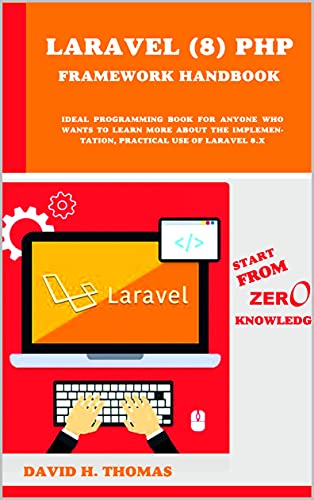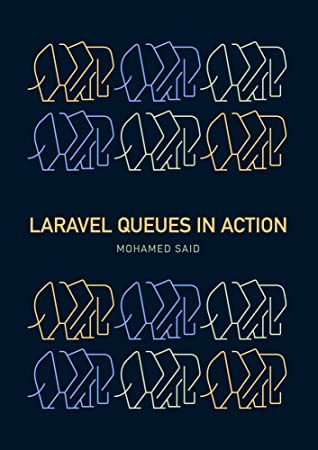Download This PDF Book: Introduction to Linear Algebra by Gilbert Strang
I am happy for you to see this Fifth Edition of Introduction to Linear Algebra. I hope those lectures will be useful to you (maybe even enjoyable!). Hundreds of colleges and universities have chosen this textbook for their basic linear algebra course.
A sabbatical gave me a chance to prepare two new chapters about
probability and statistics and understanding data. Thousands of other improvements too-probably only noticed by the author. . . Here is a new addition for students and all readers:
Every section opens with a brief summary to explain its contents. When you read a new section, and when you revisit a section to review and organize it in your mind, those lines are a quick guide and an aid to memory.
Linear algebra is something all mathematics undergraduates and many other students, in subjects ranging from engineering to economics, have to learn.
The fifth edition of this hugely successful textbook retains the quality of earlier editions while at the same time seeing numerous minor improvements and major additions.
The latter include: a new chapter on singular values and singular vectors, including ways to analyze a matrix of data; a revised chapter on computing in linear algebra, with professional-level algorithms and code that can be downloaded for a variety of languages; a new section on linear algebra and cryptography; and a new chapter on linear algebra in probability and statistics.
A dedicated and active website also offers solutions to exercises as well as new exercises from many different sources (e.g. practice problems, exams, development of textbook examples), plus codes in MATLAB, Julia, and Python.
Here are 12 points about learning and teaching from this book :
1. Chapter 1 starts with vectors and dot products. If the class has met them before, focus quickly on linear combinations. Section 1.3 provides three independent vectors whose combinations fill all of 3-dimensional space, and three dependent vectors in a plane. Those two examples are the beginning of linear algebra.
2. Chapter 2 shows the row picture and the column picture of Ax = b. The heart of linear algebra is in that connection between the rows of A and the columns of A : the same numbers but very different pictures. Then begins the algebra of matrices: an elimination matrix E multiplies A to produce a zero. The goal is to capture the whole process-start with A, multiply by E's, end with U. Elimination is seen in the beautiful form A = LU. The lower triangular L holds the forward elimination steps, and U is upper triangular for back substitution.
3. Chapter 3 is linear algebra at the best level: subspaces. The column space contains all linear combinations of the columns. The crucial question is: How many of those columns are needed? The answer tells us the dimension of the column space, and the key information about A. We reach the Fundamental Theorem of Linear Algebra.
4. With more equations than unknowns, it is almost sure that Ax = b has no solution. We cannot throw out every measurement that is close but not perfectly exact! When we solve by least squares, the key will be the matrix A T A. This wonderful matrix appears everywhere in applied mathematics, when A is rectangular.
5. Determinants give formulas for all that has come before-Cramer's Rule, inverse matrices, volumes inn dimensions. We don't need those formulas to com- pute. They slow us down. But det A = 0 tells when a matrix is singular: this is the key to eigenvalues.
6. Section 6 .1 explains eigenvalues for 2 by 2 matrices. Many courses want to see eigenvalues early. It is completely reasonable to come here directly from Chapter 3, because the determinant is easy for a 2 by 2 matrix. The key equation is Ax= >.x. Eigenvalues and eigenvectors are an astonishing way to understand a square matrix. They are not for Ax = b, they are for dynamic equations like du/ dt = Au. The idea is always the same: follow the eigenvectors.
In those special directions, A acts like a single number (the eigenvalue>.) and the problem is one-dimensional. An essential highlight of Chapter 6 is diagonalizing a symmetric matrix. When all the eigenvalues are positive, the matrix is "positive definite". This key idea connects the whole course-positive pivots and determinants and eigenvalues and energy. I work hard to reach this point in the book and to explain it by examples.
7. Chapter 7 is new. It introduces singular values and singular vectors. They separate all martices into simple pieces, ranked in order of their importance. You will see one way to compress an image. Especially you can analyze a matrix full of data.
8. Chapter 8 explains linear transformations. This is geometry without axes, algebra with no coordinates. When we choose a basis, we reach the best possible matrix.
9. Chapter 9 moves from real numbers and vectors to complex vectors and matrices. The Fourier matrix F is the most important complex matrix we will ever see. And the Fast Fourier Transform (multiplying quickly by F and p-1 ) is revolutionary.
10. Chapter 10 is full of applications, more than any single course could need:
10.1 Graphs and Networks-leading to the edge-node matrix for Kirchhoff's Laws
10.2 Matrices in Engineering-differential equations parallel to matrix equations
10.3 Markov Matrices-as in Google's PageRank algorithm
10.4 Linear Programming-a new requirement x 2'. 0 and minimization of the cost
10.5 Fourier Series-linear algebra for functions and digital signal processing
10.6 Computer Graphics-matrices move and rotate and compress images
10.7 Linear Algebra in Cryptography-this new section was fun to write. The Hill Cipher is not too secure. It uses modular arithmetic: integers from O to p - 1. Multiplication gives 4 x 5 = 1 (mod 19). For decoding this gives 4-1 = 5.
11. How should computing be included in a linear algebra course? It can open a new understanding of matrices-every class will find a balance. MATLAB and Maple and Mathematica are powerful in different ways. Julia and Python are free and directly accessible on the Web. Those newer languages are powerful too ! Basic commands begin in Chapter 2. Then Chapter 11 moves toward professional al- gorithms.You can upload and download codes for this course on the website.
12. Chapter 12 on Probability and Statistics is new, with truly important applications. When random variables are not independent we get covariance matrices. Fortunately they are symmetric positive definite. The linear algebra in Chapter 6 is needed now.
Book Description
The fifth edition of this landmark textbook builds on the quality of earlier editions with many minor improvements and major additions.
About the Author
Gilbert Strang is a professor of mathematics at the Massachusetts Institute of Technology, where his research focuses on analysis, linear algebra and PDEs.
He is the author of many textbooks and his service to the mathematics community is extensive. He has spent time both as President of SIAM and as Chair of the Joint Policy Board for Mathematics, and has been a member of various other committees and boards.
He has received several awards for his research and teaching, including the Chauvenet Prize (1976), the Award for Distinguished Service (SIAM, 2003), the Graduate School Teaching Award (Massachusetts Institute of Technology, 2003) and the Von Neumann Prize Medal (US Association for Computational Mechanics, 2005), among others.
He is a Member of the National Academy of Sciences, a Fellow of the American Academy of Arts and Sciences, and an Honorary Fellow of Balliol College, Oxford.
Contents:
1 Introduction to vectors
2 Solving linear equations
3 Vector spaces and subspaces
4 Orthogonality
5 Determinant
6 Eigenvalues and Eigenvectors
7 The singular value decomposition SVD
8 Linear transformation
9 Complex vectors and matrices
10 Application
11 Numerical linear Algebra
12 Linear algebra in probability & statistics
About The Book:
Publisher : Wellesley-Cambridge Press; 5th edition
Language : English
Pages : 584
File : PDF, 60 MB
Free Download the Book: Introduction to Linear Algebra by Gilbert Strang
PS: Share the link with your friends
If the Download link is not working, kindly drop a comment below, so we'll update the download link for you.
Happy downloading!








